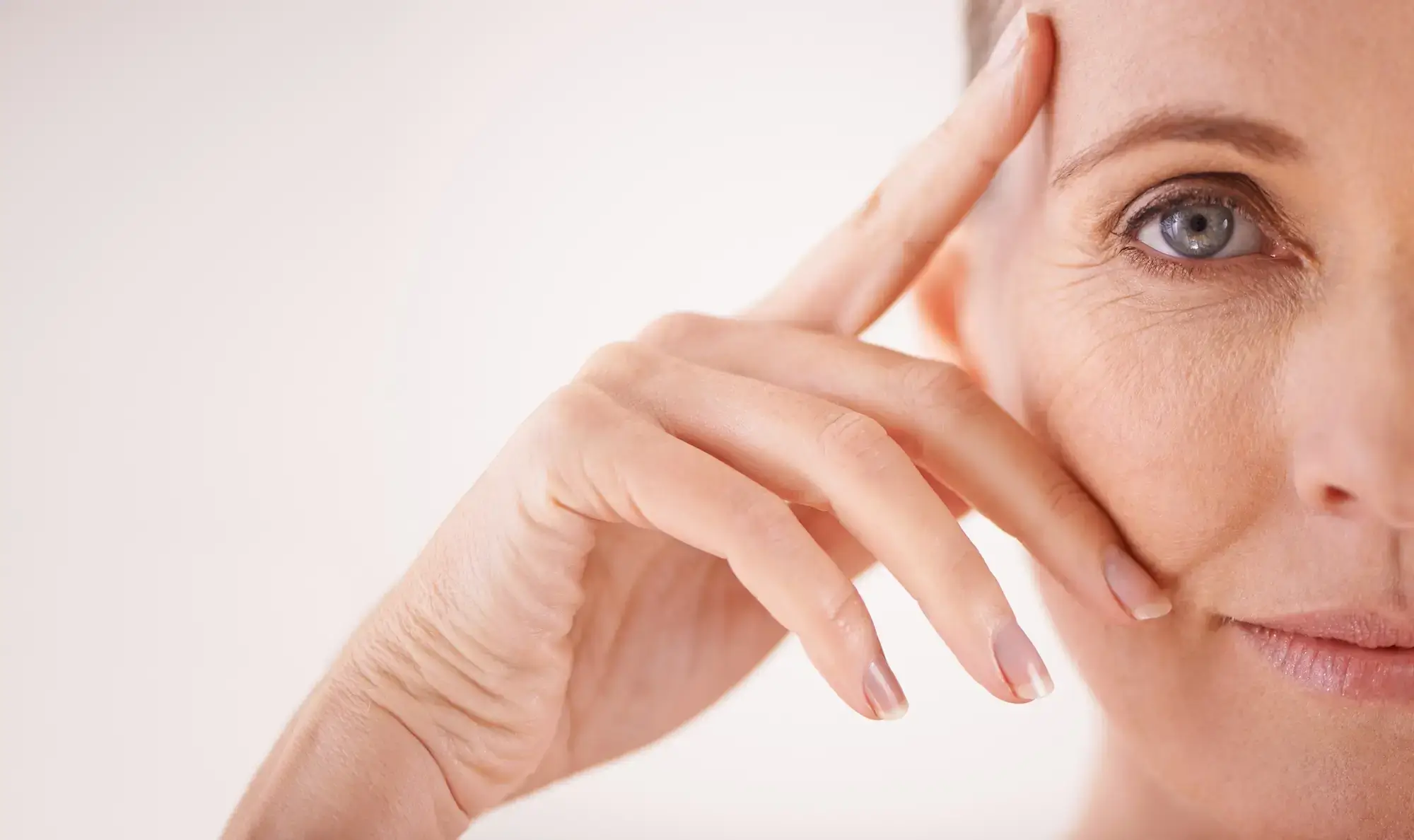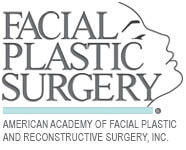
Did you know that not all fine lines on your face are caused by aging? Some might actually be dehydration lines, a lesser-known skin issue that can easily be mistaken for wrinkles. Understanding the difference between dehydration lines vs wrinkles is crucial because effective treatments for one may not work for the other. By knowing exactly what you’re dealing with, you can choose the right treatments to keep your skin healthy and youthful, saving both time and money.
Key Takeaway: In a nutshell, dehydration lines are fine, temporary lines caused by a lack of moisture, often appearing under the eyes and on the forehead. Wrinkles, on the other hand, are deeper and more permanent, resulting from factors like aging, sun exposure, and repeated facial expressions.
In this blog, we’ll share expert advice on how to identify and manage both dehydration lines and wrinkles, helping you keep your skin looking its best.
What Are Dehydration Lines?
Dehydration lines are fine, temporary lines that appear when your skin lacks sufficient moisture. These superficial lines are quite different from the deeper, age-related wrinkles and can be quickly alleviated with proper hydration.
What do dehydration lines look like? These lines are usually thin and shallow, often making the skin look tightly pulled or slightly crepey. You’ll typically spot them under your eyes and on your forehead—areas especially vulnerable to moisture loss.
Contributing Factors: The primary factor behind dehydration lines is straightforward: insufficient moisture. When your skin is under-hydrated, it loses its plumpness and smooth texture, leading to these temporary fine lines. Though they may resemble the early stages of wrinkles, dehydration lines can usually be reduced with adequate hydration and targeted skincare.
What Are Wrinkles?
Wrinkles are those deeper, more permanent lines that develop from aging, sun exposure, and everyday facial expressions. Unlike the temporary dehydration lines that fluctuate with your skin’s moisture levels, wrinkles have more permanent roots.
What do wrinkles look like? Wrinkles are deeper and more defined than dehydration lines, ranging from fine lines at the corners of your eyes to deep creases across your forehead. They manifest as crow’s feet, laugh lines, and forehead furrows.
Contributing Factors: Wrinkles develop from both dynamic and static processes:
- Dynamic wrinkles emerge with facial movements such as smiling or frowning, frequently appearing as crow’s feet and laugh lines.
- Static wrinkles are present even when your face is at rest, reflecting a loss of skin elasticity and often showing on the cheeks, neck, and forehead.
Dehydration and Wrinkles: It’s also important to note that lack of moisture can accentuate any wrinkles, making them appear deeper than they are. Keeping your skin hydrated can help minimize their appearance.
A Closer Look at the Causes of Dehydration Lines vs. Wrinkles
Understanding the underlying causes of dehydration lines and wrinkles can help you better prevent and treat these common skin concerns. Let’s explore what really leads to these changes in your skin.
Causes of Dehydration Lines
- Inadequate Water Intake: It’s simple—less water in your body means less moisture for your skin. When you’re not drinking enough water, your skin isn’t as plump and smooth, which makes fine lines more visible.
- Dry Weather Conditions: Living in areas with low humidity or cold, windy weather can sap moisture straight from your skin. These conditions are notorious for creating an environment where dehydration lines can flourish.
- High Temperatures: For those in warmer climates, like Florida, the heat can increase water loss through sweating. This doesn’t just make you thirsty; your skin feels the dehydration, too. Always remember to hydrate well, especially if you spend a lot of time outdoors.
- Harsh Skincare Products: Using skincare products with harsh chemicals like alcohol can strip your skin’s natural oils, disrupting the moisture barrier. This often leads to dryness and makes dehydration lines more prominent.
How Dehydration Affects Your Skin on a Cellular Level
At the cellular level, dehydration takes a toll on the stratum corneum, the outermost layer of your skin. This layer loses its elasticity and ability to retain moisture when it’s dehydrated, making your skin feel tight and look crepey. Ensuring proper hydration is crucial as it helps maintain the skin’s barrier function, preventing moisture loss and keeping your skin smooth and resilient.
Causes of Wrinkles
Internal Aging Process
The journey of aging is natural and inevitable, marked distinctly by changes in our skin’s structure:
- Collagen and Elastin Production Decreases: As years pass, your skin’s natural production of collagen and elastin diminishes. These proteins are vital for maintaining skin firmness and elasticity. With less collagen and elastin, your skin starts to lose its youthful tightness, leading to the formation of static wrinkles, which are noticeable even when your face is at rest.
External Environmental Influences
External factors often accelerate the aging process:
- Sun Exposure: Prolonged exposure to the sun is perhaps the most significant external factor in wrinkle formation. UV radiation penetrates the skin and breaks down its collagen and elastin fibers, speeding up the aging process and leading to pronounced wrinkles. This is particularly evident in sun-exposed areas like the face, neck, and hands.
- Dynamic Facial Expressions: Regular facial movements, such as smiling, frowning, or squinting, lead to dynamic wrinkles. These wrinkles emerge from the repeated use of facial muscles and are most apparent when expressing emotions.
By delving into these causes, you can better understand how wrinkles develop and what you can do to mitigate their appearance. Remember, while aging is a natural process, certain lifestyle choices, like protecting against sun exposure and maintaining a healthy skin care regimen, can help manage and slow the progression of wrinkles.
How to Identify Dehydration Lines and Wrinkles
It can be tricky to distinguish between dehydration lines and wrinkles because both can appear as fine lines on your skin. Here’s how you can spot the difference:
Signs of Dehydration Lines:
- Location: Look for these lines where the skin commonly loses moisture, like under the eyes and on the forehead.
- Temporary Nature: Dehydration lines can pop up suddenly and are more noticeable when your skin is dry. They often improve or even disappear with increased hydration.
- Skin Condition: If your skin feels rough, flaky, or tight, and pinching the skin shows delayed elasticity, you’re likely seeing dehydration lines.
Signs of Wrinkles:
- Depth and Permanence: Wrinkles are more pronounced and don’t disappear with hydration. They deepen over time, remaining visible despite moisturizing.
- Skin Condition: Wrinkles are often associated with a loss of skin elasticity, making the skin feel looser around these lines.
Quick Tests You Can Do at Home:
- Press Test: Gently press the skin near the lines. If they fade temporarily, they’re probably dehydration lines. Wrinkles will stay visible.
- Hydration Test: After drinking a glass of water, notice any changes. Dehydration lines might lessen, but wrinkles will remain unchanged.
- Texture Test: Feel your skin’s texture. Dehydration lines cause tightness and roughness, while wrinkles often result in a looser skin texture.
By using these tips and tests, you can better understand what type of lines you’re dealing with and choose the right skincare strategy accordingly.
To streamline the treatment options for both dehydration lines and wrinkles, while enabling easy navigation to relevant pages for more details, here’s a condensed version:
How Can I Get Rid of Dehydration Lines and Wrinkles?
Treatment Options for Dehydration Lines
Hydration and Skincare: Maintaining hydration is key for supple, healthy skin. Incorporating daily water intake and using hydrating skincare products are fundamental. Gulf Coast Facial Plastics recommends Zo Skin Health products, including their Recovery Crème and Hydrating Cleanser, designed to enhance skin moisture and texture.
Professional Treatments: For deeper hydration, consider the Moisturizing DiamondGlow® Facials available at our office’s medical spa. These treatments deeply hydrate, exfoliate, and nourish the skin, making them ideal for effectively addressing dehydration lines.
Treatment Options for Wrinkles
At-Home Treatments: A robust anti-aging routine is crucial. This includes daily cleansing, moisturizing, and protecting the skin from the sun. Products enriched with retinol, peptides, and antioxidants, such as those in the Zo Skin Health Anti-Aging Program, are recommended to combat signs of aging.
Professional Treatments: For more pronounced wrinkles, Gulf Coast Facial Plastics offers several advanced options:
- Botox for dynamic wrinkles, such as crow’s feet and forehead lines, which works by relaxing the muscles that cause these wrinkles.
- Microneedling with Radiofrequency (RF), which stimulates collagen production to reduce fine lines and improve skin texture.
- CO2 Laser Facial Resurfacing for deeper facial lines and significant aging signs. This treatment targets deeper layers of the skin, promoting new skin growth and improved elasticity.
- Dysport combats wrinkles by relaxing muscles and is especially effective treating larger areas.
By combining quality skincare products with these professional treatments, you can effectively manage dehydration lines and significantly reduce the appearance of wrinkles.
Empowering Your Skin Journey
Understanding the difference between dehydration lines and wrinkles is more than just skincare—it’s about empowering you to make informed decisions that enhance your confidence and beauty. At Gulf Coast Facial Plastics, we believe that everyone deserves to feel great in their own skin, which is why we’re dedicated to helping you understand your skin’s unique needs and finding the right treatments to address them.
Whether it’s integrating effective hydration strategies to combat dehydration lines or exploring advanced treatments for deeper wrinkles, our expert team is here to guide you every step of the way. By maintaining a proactive skincare routine and considering professional treatments, you can take control of your skin’s health and appearance, ensuring you look and feel your best.
Remember, no matter the concern, there are solutions that can help you feel confident and radiant. We invite you to visit us at Gulf Coast Facial Plastics, where we’re ready to support your journey toward a vibrant, youthful complexion.
Schedule your consultation today to get started!

 (850) 784-7722
(850) 784-7722




